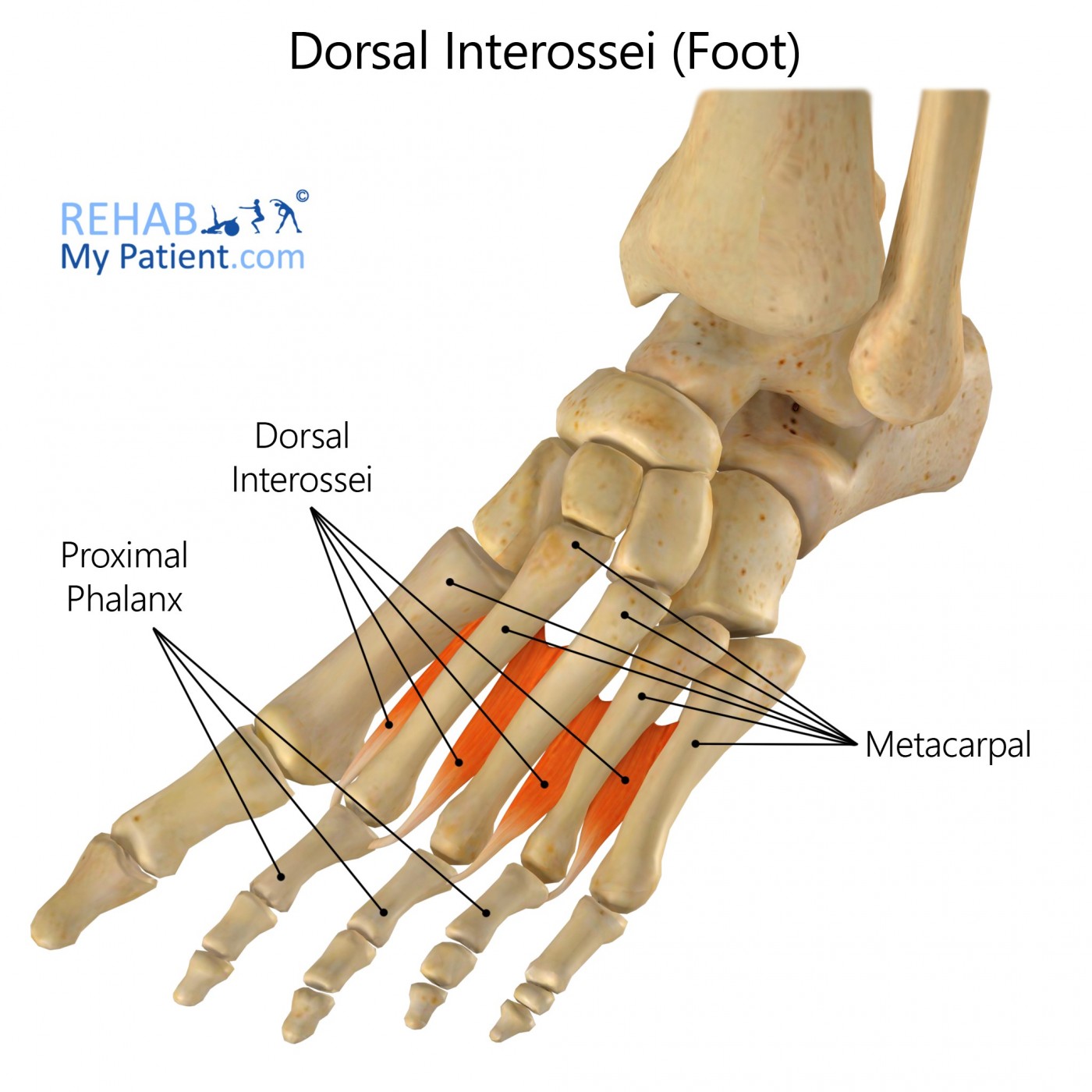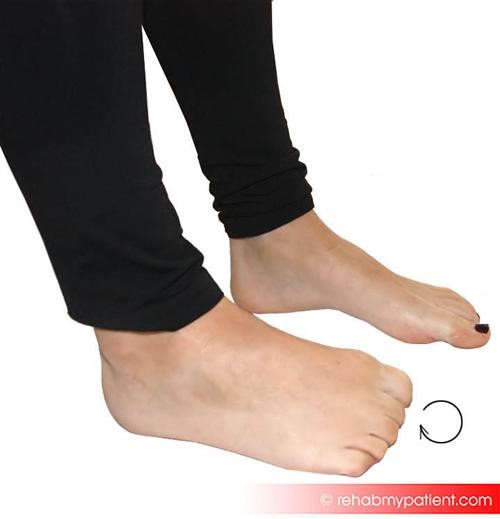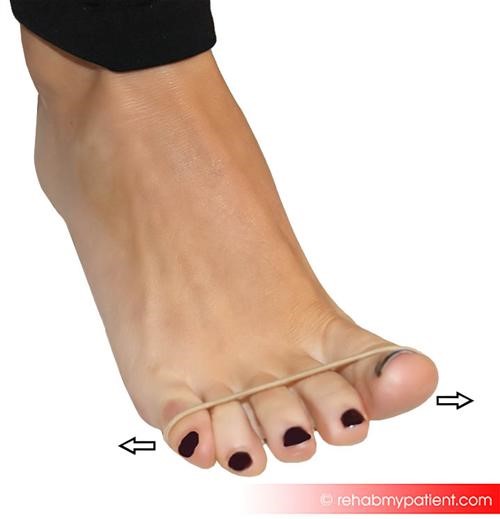Dorsal Interossei of the foot
Opublikowano dnia 22nd Jul 2020 / Opublikowano w: Następnie

General information
Dorsal Interossei of the foot are four muscles positioned between the metatarsal bones in each foot.
Literal meaning
Dorsal interossei translates from Latin as ‘muscle between the bones on the back’ (of the foot). Dorsal meaning back, inter meaning between, and os is bone.
Interesting information
Overstretching or overexertion of the dorsal interossei muscles can cause strain. A sharp pain and inability to bear full weight on the foot are symptoms of injury. This is usually accompanied by inflammation and tenderness of the muscles. This might be caused by a crushing force, twisting of the foot, injury due to fatigue caused by excessive standing or running, high heels, tight or ill-fitting shoes etc. This type of injury is also common among athletes and can be classified under compartment syndrome.
After an initial treatment of rest, ice, compression and elevation (the RICE treatment), a foot cast along with crutches is recommended until the muscles have healed. Later, a gradual level of activity can be commenced under supervision.
Origin
These are two-headed bipennate muscles which attach to the proximal half of the adjacent metatarsal bones.
Insertion
The muscles are inserted into the proximal phalanges and the extensor expansion of the second, third and fourth toe. The first is attached to the medial side of second toe; the others to the lateral sides of the three middle toes.
Function
They help in abduction of the second, third and fourth toe and also in the extension and flexion of the metatarsophalangeal joints. They thus control the direction of the toes. The dorsal interossei also help in maintaining the anterior metatarsal arch of the foot.
Nerve supply
The four muscles are innervated by the lateral plantar nerve (S2-S3), with the (most lateral) fourth interossei by the superficial branch, and the other three by the deep branch.
Blood supply
Blood supply to these muscles is from the lateral and medial tarsal arteries, four plantar and dorsal metacarpal arteries and the dorsal digital arteries.

Relevant research
The study, ‘Importance and challenges of measuring intrinsic foot muscle strength’ provides an overview of the anatomy of intrinsic foot muscles, the implications of intrinsic weakness and evaluates the methods used to measure intrinsic foot muscle strength. Toe flexor strength and hand-held dynamometry were found to be promising measures of intrinsic foot muscle strength.
Soysa A, Hiller C, Refshauge K, Burns J. Importance and challenges of measuring intrinsic foot muscle strength. J Foot Ankle Res. 2012;5(1):29. Published 2012 Nov 26. doi:10.1186/1757-1146-5-29.
Dorsal Interossei of the foot exercises
Intrinsic foot exercises can help strengthen the muscles and prevent foot strain due to overuse. Begin with a five minute barefoot walk to warm up. Keep a golf ball in the freezer and massage your feet using the frozen ball after doing the exercises. This will relax your muscles and provide a deep massage to them.
Toe scrunch
Sitting down, pull/curl your toes under your foot. Hold this position for 20 seconds, and repeat three times.

Toe Extension
Wrap a rubber band around your toes. Stretch your toes, trying to separate each toe, and hold for five seconds. Release and repeat five times for each foot.

Zapisać się
Zarejestruj się już teraz, aby skorzystać z bezpłatnego okresu próbnego!
Zacznij korzystać z Rehab My Patient już dziś i zrewolucjonizuj proces przepisywania ćwiczeń, aby zapewnić sobie skuteczną rehabilitację.
Rozpocznij 14-dniowy bezpłatny okres próbny